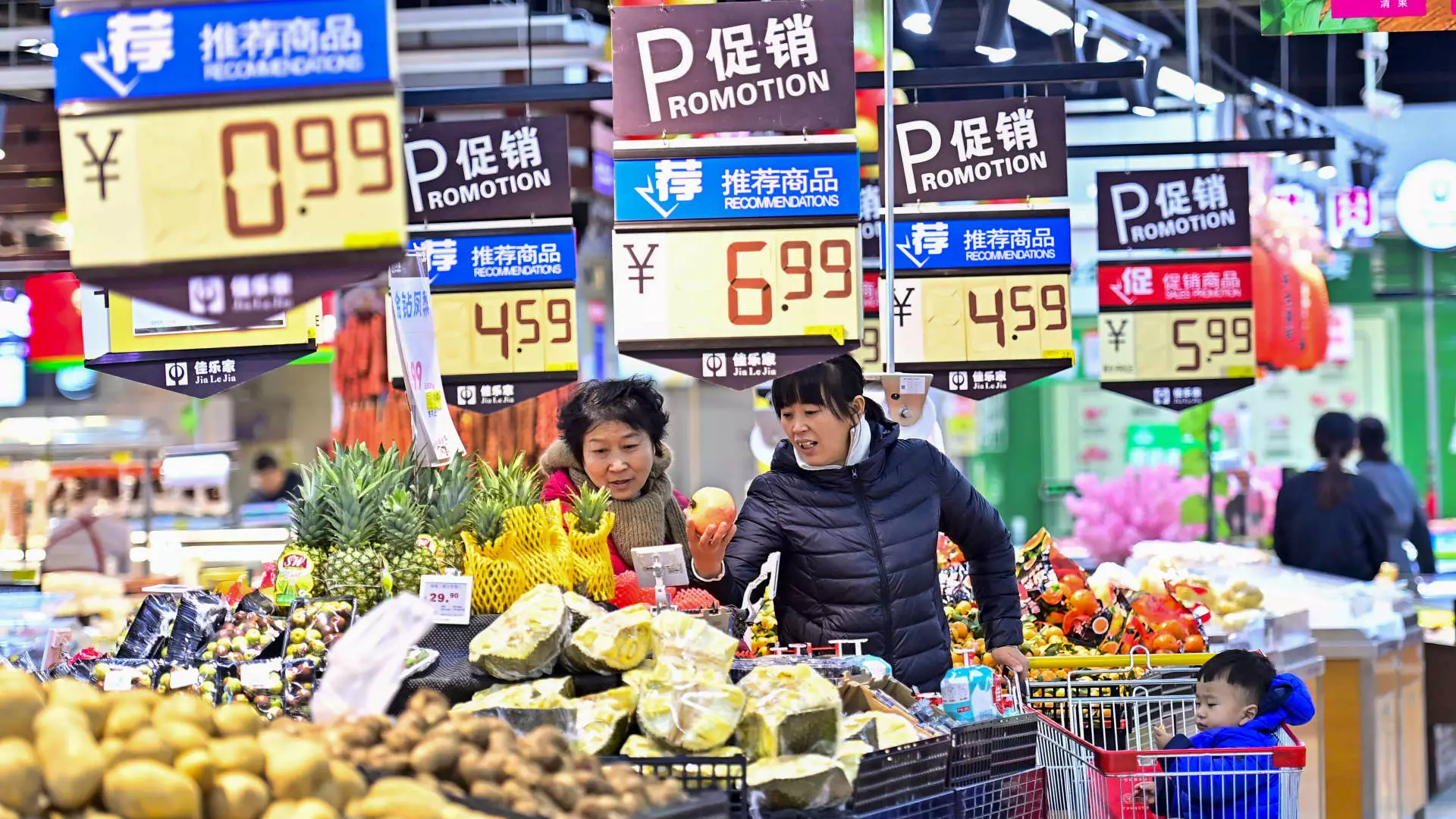As of December, China’s consumer price inflation reported a modest increase of just 0.1% year-on-year, as per data released by the National Bureau of Statistics. This figure is particularly alarming as it represents a deceleration from the prior month’s inflation rate of 0.2%. Economists had paradoxically anticipated a stabilization in inflation, potentially indicating deflationary forces at play. The core Consumer Price Index (CPI) excluding volatile food and energy prices did see a slight uptick to 0.4%, up from 0.3% in November, yet the overall economic sentiment remains dampened by insufficient domestic demand.
The flat monthly CPI suggests that immediate consumer price pressures are absent, contrasting sharply with a more pronounced 0.6% decline noticed the month prior. Contributing to this subdued environment, food prices notably decreased by 0.6%, attributed to favorable agricultural conditions. Fresh produce, notably vegetables and fruits, witnessed significant price drops of 2.4% and 1.0%, respectively. Pork prices, crucial to the CPI calculation, also decreased by 2.1%. Analysts at ANZ Bank have cautioned that these lower pork prices will likely exert downward pressure on the headline CPI figures moving into 2025.
In a broader economic context, wholesale prices continue their downward trajectory, marking the 27th consecutive month of decline. In December, producer price inflation (PPI) fell by an annual rate of 2.3%, slightly beating forecasts that projected a 2.4% drop. Month-over-month comparisons show a decline of 0.1%, a stark contrast to the minor recovery observed the previous month. The state of infrastructure and real estate projects, particularly during what is typically the off-peak season, has had a discernible impact on demand for commodities like steel, further compounding the deflationary signals.
These trends signal a troubling narrative for China’s economic landscape. Persistent near-zero consumer inflation raises red flags concerning weak domestic demand, amplifying worries about looming deflation. Despite numerous stimulus efforts by the Chinese government since last September—including interest rate reductions and more robust lending practices—consumer spending remains lethargic. Recently, authorities expanded a consumer trade-in program aimed at stimulating spending through subsidies for upgraded appliances and vehicles. However, skeptics suggest such measures are mere “quick fixes” that provide limited relief to the wider consumption issues facing the country.
Louise Loo, the lead economist at Oxford Economics, highlights the short-lived efficacy of targeted subsidy programs, suggesting that they may alter consumption patterns for the worse in the long term. Consumer habits are heavily influenced by expectations of discounts, leading to delayed purchasing decisions. Similarly, Shaun Rein of the China Market Research Group points out the limitations of the government’s “cash for clunkers” initiative, questioning how much further the retail sector can grow given the finite nature of appliance purchases within households.
As consumers edge closer to the Chinese New Year, there is an observable trend of price sensitivity as families search for bargains. This reticence to shop unless significant discounts are available only heightens the risk of economic stagnation.
Despite the aforementioned challenges, there are signs that the Chinese economy may have the potential for gradual recovery. Observations indicate that factory activity has expanded over the past quarter, although this momentum decreased in December. Carlos Casanova from Union Bancaire Privée points out that recent policy shifts and stable industrial activity could lay the groundwork for economic recovery, albeit amid serious obstacles such as ongoing trade tensions and challenges in the property sector.
In summation, while some indicators suggest a possibility for economic improvement, the persistent weakness in consumer sentiment fundamentally complicates the path to sustained reflation. As evidenced by the onshore yuan dropping to a 16-month low against the dollar, the overarching outlook calls for vigilance and adaptive strategies to navigate the evolving economic climate. There remains a pressing need for not just stimulus measures but also innovative policies that genuinely stimulate consumer spending to invigorate China’s economy.

